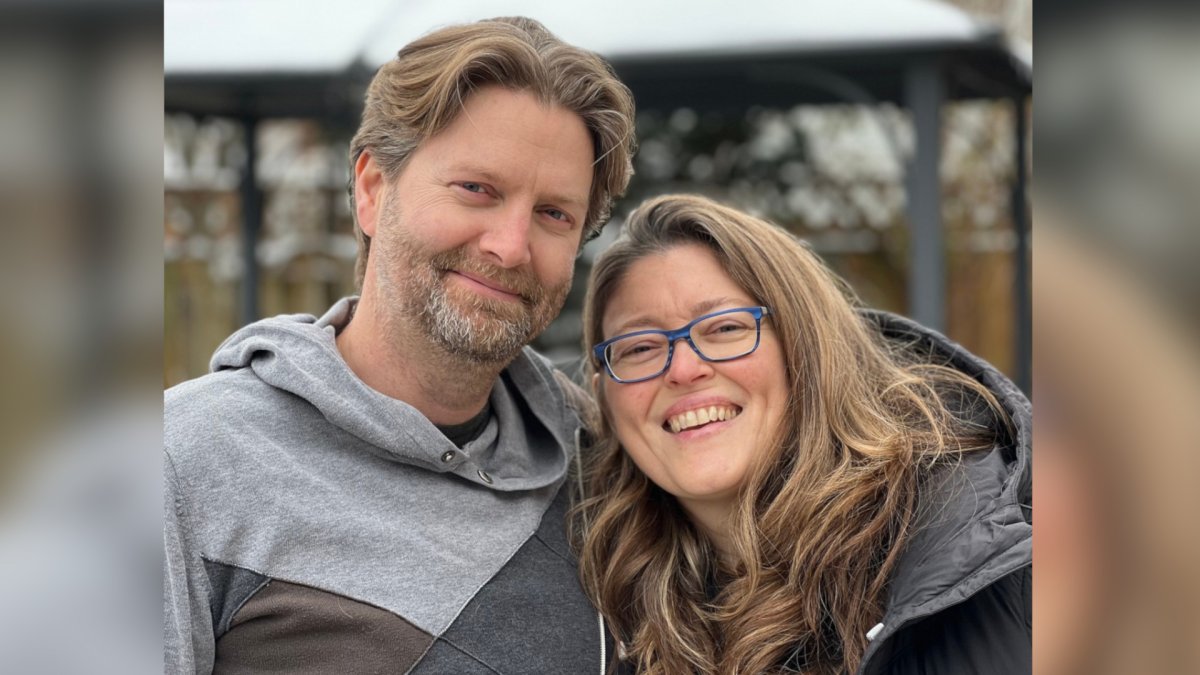A Simcoe, Ont., woman diagnosed with a common form of kidney disease is hoping to avoid dialysis and a long wait list by proactively searching out an organ donor via social media.

Christina Meyer characterizes her appeal as a “preemptive look” for a match in an effort to maintain her quality of life amid an inevitable decline in kidney function.
“I’m not quite in kidney failure yet, but I’m trying to really avoid dialysis,” Meyer told 900 CHML’s Good Morning Hamilton.
“Dialysis has an impact on your quality of life and I’m just trying to maintain my quality of life.”
Close to 1,300 people are on the province’s transplant waiting list, with about 900 looking for a kidney through either a deceased or living donor, according to the Trillium Gift of Life Network, which is responsible for donation services across Ontario.
Meyer’s idea of seeking out a kidney online was spurred on by a PKD Foundation of Canada summit, which suggested one should “have your kidney find you on social media.”
- Canadian man dies during Texas Ironman event. His widow wants answers as to why
- ‘Super lice’ are becoming more resistant to chemical shampoos. What to use instead
- Canadians more likely to eat food past best-before date. What are the risks?
- Treatment from female doctors leads to lower death rates, study finds
“That sounded appealing to try and put it out there and make awareness that there are people in need. … So I just decided to do that,” she said.
Autosomal dominant polycystic kidney disease (ADPKD), the affliction Meyer has, is passed down from parent to child and progressively causes poor kidney function due to the formation of cysts hindering the organ’s main job of cleansing blood of toxins and transforming waste into urine.
Meyer currently measures her kidney function through an estimated glomerular rate (eGFR), done with a simple blood test that measures creatinine levels.
Retired kidney specialist and Kidney Foundation of Ontario president Dr. Norman Muirhead says ADPKD is a common inherited form of kidney disease causing organ failure.
“It accounts for around seven per cent or thereabouts of cases of chronic kidney disease requiring dialysis or transplant in Canada on an annual basis,” Muirhead told Global News.
Meyer says concern over the disease came in her late teens when learning her mother was in the early stages of kidney decline and put on dialysis for some 12 years.
Her mother would suffer numerous complications and pass just before her 67th birthday.
Not long after, a 40-year-old Meyer would learn her kidneys were on the decline, forcing treatment through an ADPKD medication called “Jinarc,” something she’s been taking since 2017.
She says her kidneys are currently functioning at approximately 20 per cent, which leaves her with few options beyond a kidney transplant from a living donor.
“It’s getting to that point where you just have to look at your treatment options, and I would really like a transplant instead,” Meyer said.
“From a living donor versus a deceased donor, (since) there’s no waitlist.”
Muirhead says patients endure one of two or both forms of dialysis: peritoneal, an every night process excreting impurities built up during the previous day, and hemodialysis which involves three to four hours on a filtering machine three days a week, usually at a clinic.
He estimates a patient could make as many as 156 visits a year to the hospital, providing they don’t have their own filtering equipment at home.
“They’re both fairly time-consuming,” Muirhead said. “It’s not just the amount of time you spend on the machine that’s important, but the amount of time and energy that you have to expend to get there and get home again.”
“It certainly interferes with really leading a normal life and being able to hold down, for example, a full-time job.”
A living donor kidney transplant is easier than it was two decades ago, according to Muirhead, since it can now be done via laparoscopy using small incisions and a camera.
“Most people are back on their feet within a few days after a transplant and are back to something remotely resembling a normal-feeling health within the first six to 12 weeks after surgery,” Muirhead said.
About 77 per cent of an estimated 4,100 Canadians on a waiting list for an organ transplant are seeking a kidney.
Potential living donors generally need to be in good health absent of heart disease, circulatory problems, cancer, obesity and any psychological issues.
Meyer said her campaign has fielded about a half dozen “potentially willing” candidates ready to test for compatibility and ultimately a donation.
“So once my eGFR drops to the point where I need to start looking at treatment options, such as transplant, then I have to do my portion of the testing and … see if I’m compatible with the people that are matching,” Meyer said.








Comments